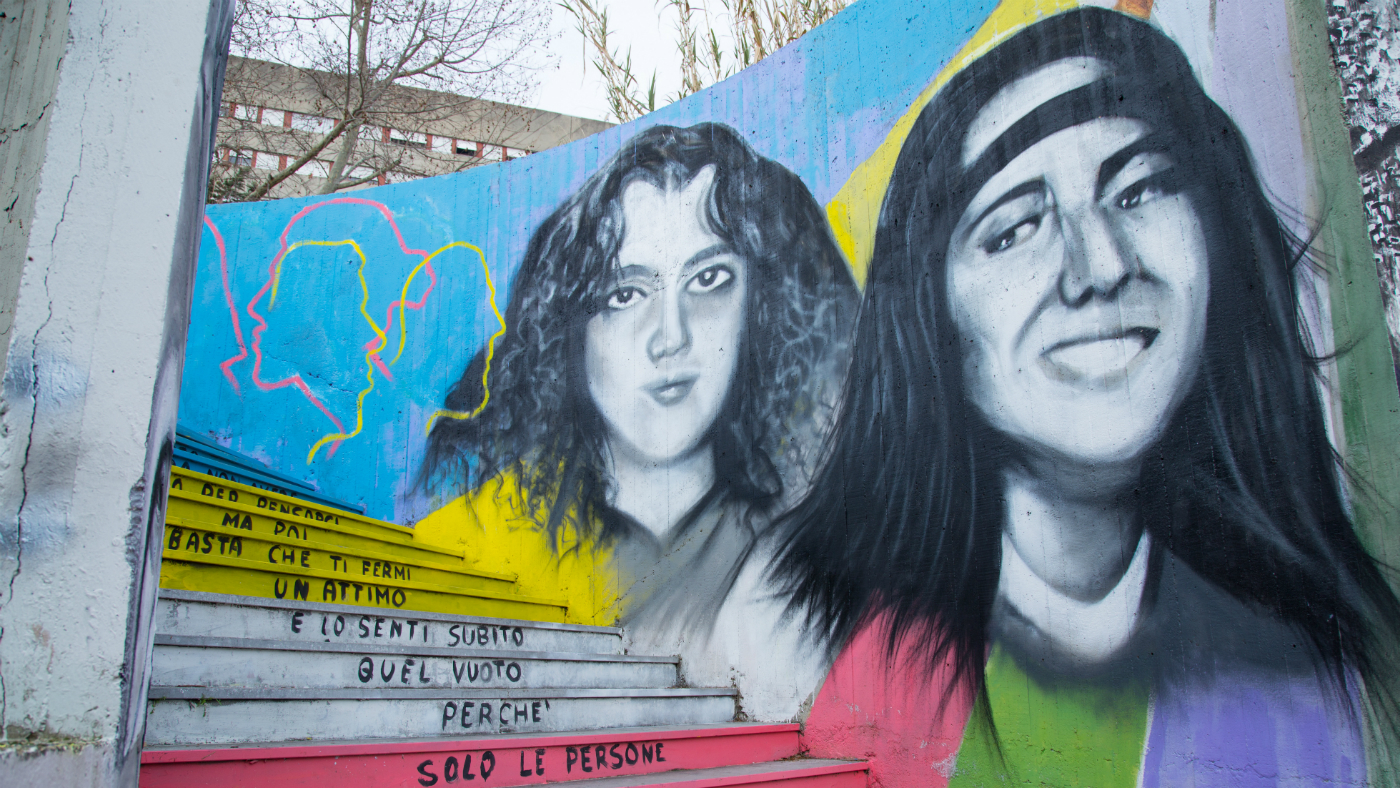Emanuela Orlandi: could Vatican tomb search solve 36-year-old cold case?
The missing schoolgirl’s family requested the tombs be searched after receiving an anonymous tip-off

The Vatican has agreed to open two tombs at a cemetery on its grounds in a bid to help solve the case of a 15-year-old girl who vanished in 1983.
Emanuela Orlandi, the daughter of a Vatican employee, disappeared after leaving a music lesson in Rome 36 years ago. Now, following a request by her family, DNA tests are to be carried out on bones exhumed from the graves at the Teutonic Cemetery.
According to Italian news agency ANSA, Emanuela’s family petitioned the Vatican in response to an anonymous letter sent to their lawyer last year that advised to "seek where the angel indicates”.
The Week
Escape your echo chamber. Get the facts behind the news, plus analysis from multiple perspectives.

Sign up for The Week's Free Newsletters
From our morning news briefing to a weekly Good News Newsletter, get the best of The Week delivered directly to your inbox.
From our morning news briefing to a weekly Good News Newsletter, get the best of The Week delivered directly to your inbox.
An accompanying photograph showed a centuries-old stone statue of an angel that points to the two tombs at the Vatican burial site, which sits adjacent to Saint Peter’s Basilica and is reserved principally for German-speaking religious figures.
A Vatican spokesperson said the graves will be opened on 11 July.
The Washington Times reports that members of Orlandi’s family, their lawyers and legal representatives for the Holy See will be present, along with relatives of the people known to be buried in the tombs.
Emanuela’s mother and brother, who still live in the tiny city state, have made repeated pleas over the years for the inquiry into her disappearance to be reopened.
A free daily email with the biggest news stories of the day – and the best features from TheWeek.com
Pietro Orlandi told ANSA that “after 35 years of lack of cooperation”, the renewed efforts to find his sister mark an “important breakthrough”.
As Catholic news site The Tablet notes, the Vatican has no jurisdiction to investigate her disappearance, because it happened in Italian territory.
“Therefore, the Vatican initiative concerns only the verification of the possible burial of the body of Emanuela Orlandi in the territory of the Vatican State,” the Holy See said in a statement.
Investigators will then oversee scientific analysis and DNA tests to date and identify the exhumed remains.
The Orlandi case has captured the imagination of Italians for decades and spawned numerous conspiracy theories.
Sky News, reports that many Italians “believe the teenager was murdered, possibly in connection to financial scandals surrounding the Catholic church in the early 1980s”.
CNN says that a “top Vatican exorcist”, Reverend Gabriele Amorth, claimed in 2012 that Emanuela might have been abducted for sexual reasons, adding: “The investigation should be carried out inside the Vatican and not outside.”
In 2005, an anonymous tip-off suggested that her disappearance was linked to the the grave of Enrico De Pedis, a mobster buried in a Rome basilica, adds Reuters. However, police failed to find any clues after opening his tomb seven years later.
Conspiracy theorists have also claimed that Emanuela was kidnapped to secure the release of Mehmet Ali Agca, a Turkish man who shot Pope John Paul II in 1981.
Last year, the discovery of bone fragments during construction work at the Vatican’s Embassy to Italy sparked renewed interest in the case, amid speculation that they might be those of the missing girl.
However, analysis revealed that the remains dated back to between AD90 and AD230 and came from a man, says The Guardian.
-
 How Bulgaria’s government fell amid mass protests
How Bulgaria’s government fell amid mass protestsThe Explainer The country’s prime minister resigned as part of the fallout
-
 Femicide: Italy’s newest crime
Femicide: Italy’s newest crimeThe Explainer Landmark law to criminalise murder of a woman as an ‘act of hatred’ or ‘subjugation’ but critics say Italy is still deeply patriarchal
-
 Brazil’s Bolsonaro behind bars after appeals run out
Brazil’s Bolsonaro behind bars after appeals run outSpeed Read He will serve 27 years in prison
-
 Americans traveling abroad face renewed criticism in the Trump era
Americans traveling abroad face renewed criticism in the Trump eraThe Explainer Some of Trump’s behavior has Americans being questioned
-
 Nigeria confused by Trump invasion threat
Nigeria confused by Trump invasion threatSpeed Read Trump has claimed the country is persecuting Christians
-
 Sanae Takaichi: Japan’s Iron Lady set to be the country’s first woman prime minister
Sanae Takaichi: Japan’s Iron Lady set to be the country’s first woman prime ministerIn the Spotlight Takaichi is a member of Japan’s conservative, nationalist Liberal Democratic Party
-
 Russia is ‘helping China’ prepare for an invasion of Taiwan
Russia is ‘helping China’ prepare for an invasion of TaiwanIn the Spotlight Russia is reportedly allowing China access to military training
-
 Interpol arrests hundreds in Africa-wide sextortion crackdown
Interpol arrests hundreds in Africa-wide sextortion crackdownIN THE SPOTLIGHT A series of stings disrupts major cybercrime operations as law enforcement estimates millions in losses from schemes designed to prey on lonely users


